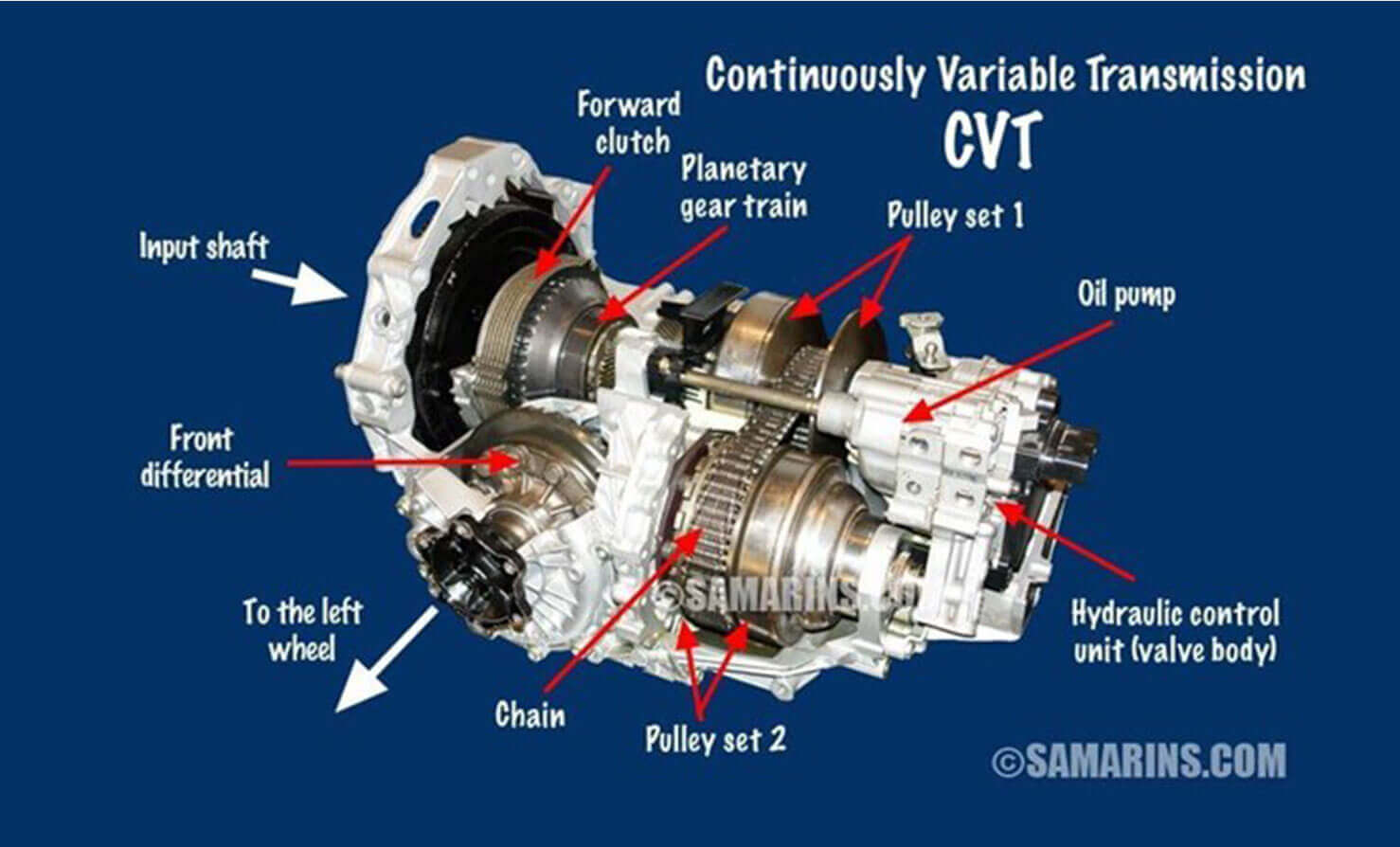An Unbiased View of cvt
An Unbiased View of cvt
Blog Article

For eCVTs, the primary get worried from time to time pointed out is driving boredom, as they don’t offer you exactly the same sporty experience as other transmissions.
Since They're cones, they've an infinite range of achievable proportions, plus the variants are fluid and continual.
HowStuffWorks The variable-diameter pulleys are the guts of a CVT. Just about every pulley is fabricated from two 20-degree cones dealing with one another. A belt rides within the groove among the two cones.
In case you’re looking for a completely new vehicle or take pleasure in figuring out how autos get the job done, you very likely have questions on CVTs. On this page, we’ll answer the following queries: What is a CVT? What will make CVTs unique from classic automatic transmissions? And Exactly what are the benefits and drawbacks of having a CVT in your car?
Even so, the CVT doesn’t conduct much better than its counterpart in just about every scenario. In regards to torque and power, the automatic transmission will gain that race.
When you step to the gas pedal of a vehicle using a consistently variable transmission, you observe the main difference instantly. The motor revs up toward the rpms at which it provides one of the most electricity, after which it stays there. Though the automobile will not react instantly. Then, a moment afterwards, the transmission kicks in, accelerating the vehicle slowly and gradually, steadily and with no shifts.
Things have adjusted for the newest generation of CVTs, although. Computer software simulates gearchanges that change the engine revs for a far more purely natural sensation – and sounding – driving encounter.
Even though CVT has just lately attained popularity, with new innovations featuring better performance, the design has existed for hundreds of years.
Manufacturers have largely now got all around that situation with intelligent program, but most remain a tiny bit fewer efficient than an equivalent manual car.
The CVT is definitely an computerized transmission that works by using two pulleys using a steel belt jogging in between them. To repeatedly range its gear ratios, the CVT at the same time adjusts the diameter in the “travel pulley” that transmits torque through the motor along with the “pushed pulley” that transfers torque to your wheels.
The shiftless character in the CVT offers unparalleled flexibility that maintains a constant angular velocity regardless of output velocity.
Allow me to share the answers to your CVT concerns, together with what on earth is a CVT, what helps make CVTs different from classic automatic transmissions, and What exactly are the pluses and minuses of CVTs?
CVTs offer a consistently variable gear ratio to help keep the vehicle’s engine working in just its optimum rpm selection for virtually any driving condition. In some cases known as a shiftless, step-much less, or single-speed transmission, a single-equipment CVT differs from a standard computerized transmission by giving several gear ratios. While Leonardo da Vinci created the first CVT in 1490 and Daimler and Benz patented their style and design in 1886, the popularity of CVTs has snowballed in the last several years.
Therefore the transmission works by using a range of gears -- from minimal to Sumber superior -- to create simpler use with the motor's torque as driving conditions alter. The gears may be engaged manually or instantly.